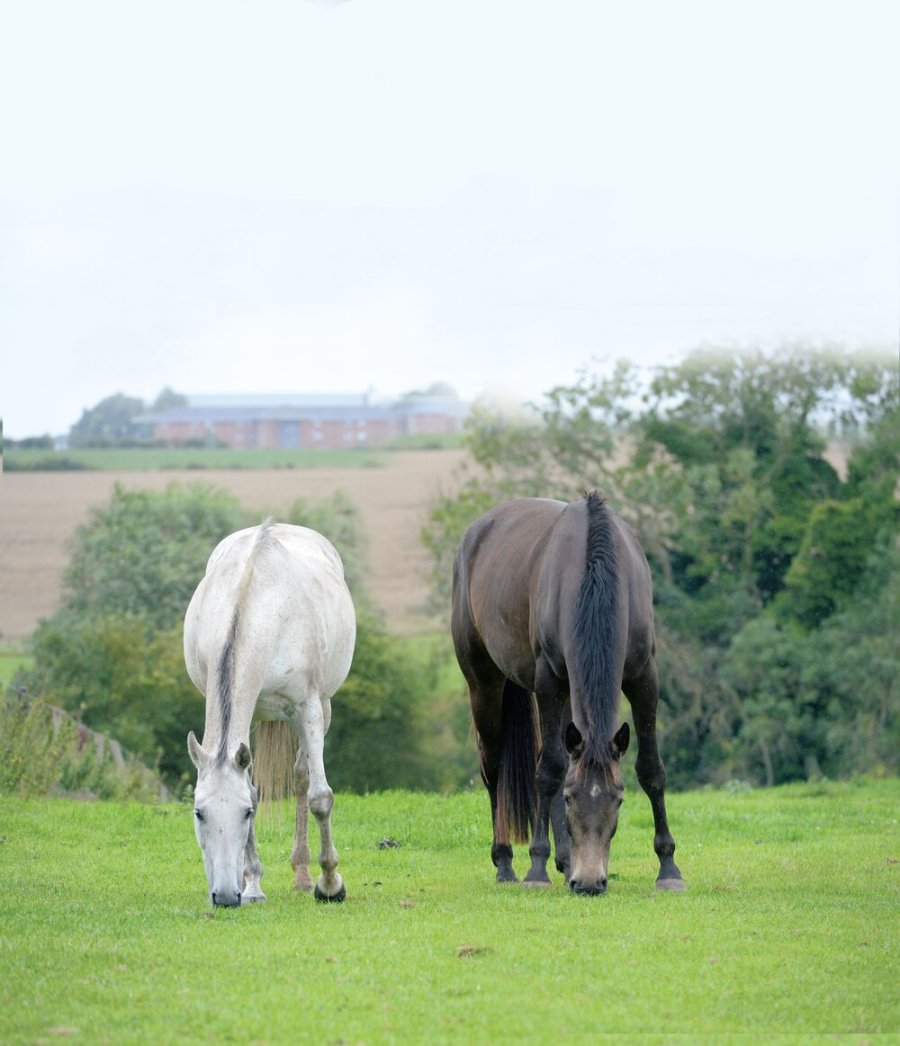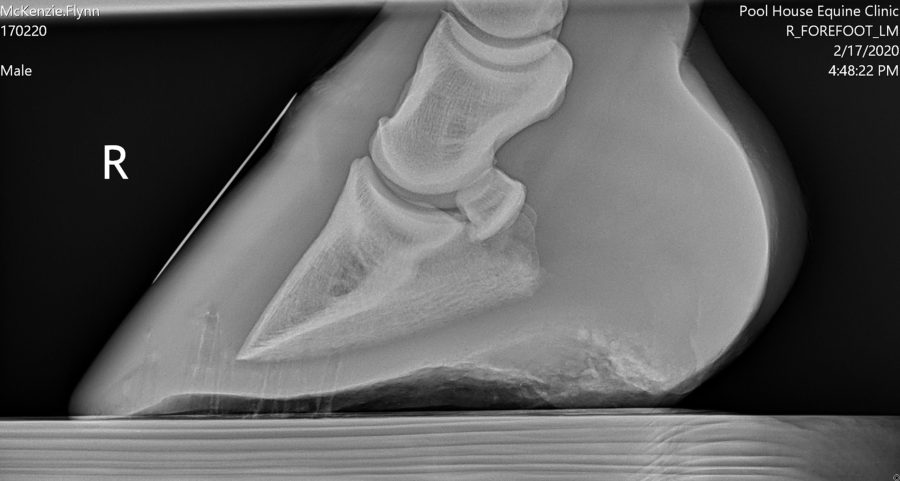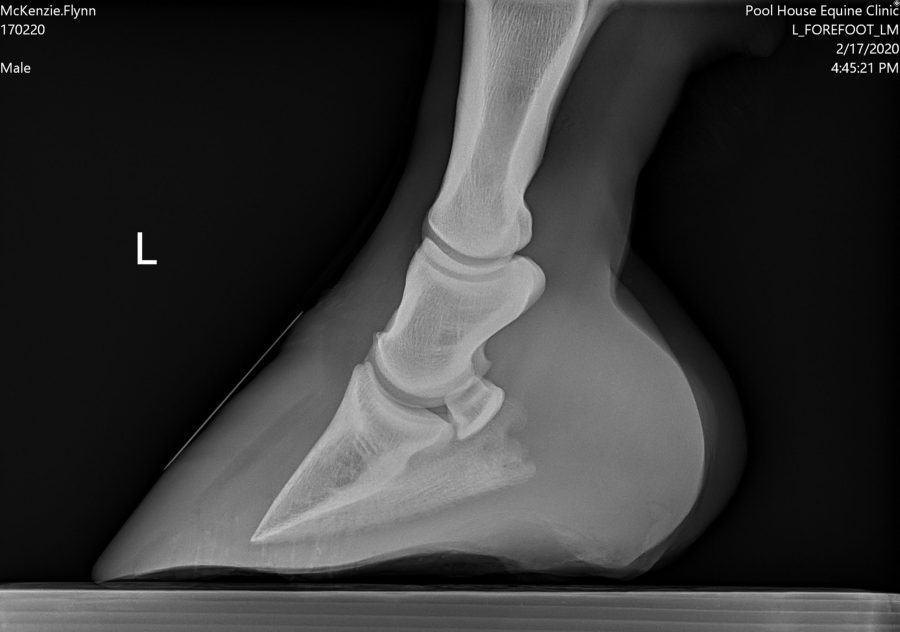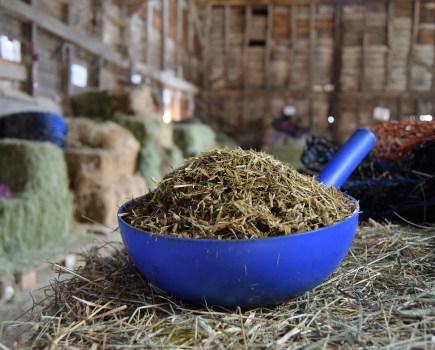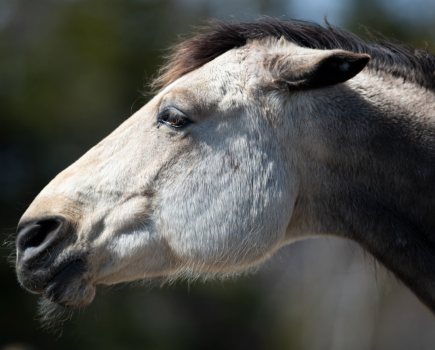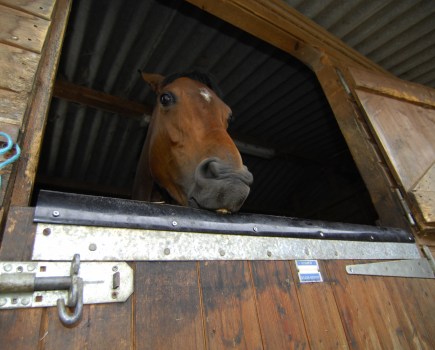When Jayne Mackenzie’s Connemara suddenly went lame, the last thing she suspected was laminitis because he wasn’t being turned out on grass.
Initially, Jayne suspected the gelding had an abscess. However, he was actually suffering from a severe attack of laminitis, which resulted in two potentially fatal and severely rotated pedal bones
“He had no history of laminitis and wasn’t even being turned out on any grass,” said Jayne, who has owned 15-year-old Flynn for seven years. “I called out my farrier Russell Jones, who came to check him. There was no sign of an abscess and the lameness improved. There was also no sign of laminitis at this point.”
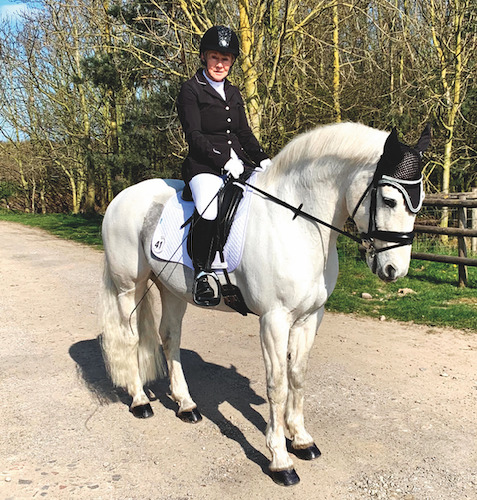
Flynn made a full recovery
Jayne carried on as normal, turning Flynn out in a sand paddock during the day and bringing him in at night as the fields were too wet to graze.
A few days later, Flynn’s lameness took a turn for the worse.
“When I arrived at the yard, Flynn was lying down and when he stood up, he was panting and showing signs of distress.
“He was moving weight from one foot to another and was very uncomfortable. He was also off his food and when Flynn is off his food, you know something is wrong.”
Jayne phoned the vet, who came out and gave Flynn a painkiller, explaining they were treating it as laminitis.
“The vet came back and took X-rays that were then sent to vet Federica Cantatore at Pool House Equine Clinic,” added Jayne. “After seeing the X-rays, Federica told us to wrap his feet up and get him to the clinic ASAP. Flynn was then hospitalised.”
‘Severe rotation’
Flynn was admitted to the vet hospital. On arrival he was uncomfortable and reluctant to move.
“During the clinical examination, Flynn was weight-shifting on his front limbs and acquiring the classic laminitis stance,” said Federica. “The digital pulse on both front feet was increased, and X-rays revealed evidence of severe rotation of the pedal bone in both front feet, although more pronounced on the left front foot, as a result of severe laminitis.”
- X-rays show severe rotation of the pedal bone in both front feet
- Rotation was more severe in his left hoof than the right
Support pads were applied on both front feet to reduce the tension of the deep digital flexor tendon and, because of the degree of pain, Flynn was started on a course of oral paracetamol and phenylbutazone, as well as morphine sulphate given intramuscularly.
The caloric intake of his diet was reduced according to his body weight, and a calmer (acepromazine) was administered twice daily to encourage Flynn to lie down for longer periods of time in order to reduce the weight on his feet.
“Flynn was closely monitored and was stabled in a box on a deep bed of shavings,” said Federica. “The following day, he was remedially shod by Jonathan Nunn AWCF with wooden clogs. Afterwards, Flynn was immediately more comfortable and the dose of phenylbutazone was reduced.”
You might also like…
- The truth about equine weight gain, spring grass and the risk of laminitis
- The subtle signs of laminitis
- 8 ways to reduce the risk of laminitis
- How hormones play a part in laminitis
Fluid build up
Due to his good progression, Flynn was discharged home three days later, with instructions for strict box rest and oral pain relief.
“I was so happy when the vets told me to come and collect my boy,” continued Jayne. “I was given a management plan which included the care of his clogs, exercise and how and what to feed him.”
Flynn was re-examined a week later and found to be very comfortable in walk. However, after removal of the clogs, a seroma (a pocket of clear serous fluid) was found at the level of the toe region in both feet.
A dorsal hoof wall resection – where a small piece of the hoof wall is removed – was performed. This relieved pressure caused by fluid filling the space as the pedal bone rotated and helped to restore blood flow to the laminae.
A small ‘window’ was left open on the sole and dorsal aspect of the clogs in the order to apply topical treatment. Jayne was instructed to keep the site clean and dry, and apply adhesive bandages to protect the hoof.
After eight weeks, heart-bar shoes, which provide extra coverage and support to the heel and frog, were applied on both front feet, and Flynn started light exercise on soft ground.
“Working with Federica, we started some limited exercise,” added Jayne. “The clogs had worked wonders.”
Strict diet
Five months of box rest later, and Flynn looked much slimmer and very comfortable.
“I am very careful with his turnout and still keep him on a strict diet,” said Jayne.
“It really brought home to me the fact that laminitis doesn’t just affect fat neglected ponies on too much grass. Flynn wasn’t even on grass at the time and nothing in his routine had changed.”
Flynn has now returned to full work and the pair completed their first elementary dressage test in April this year.
Top photo: stock image

